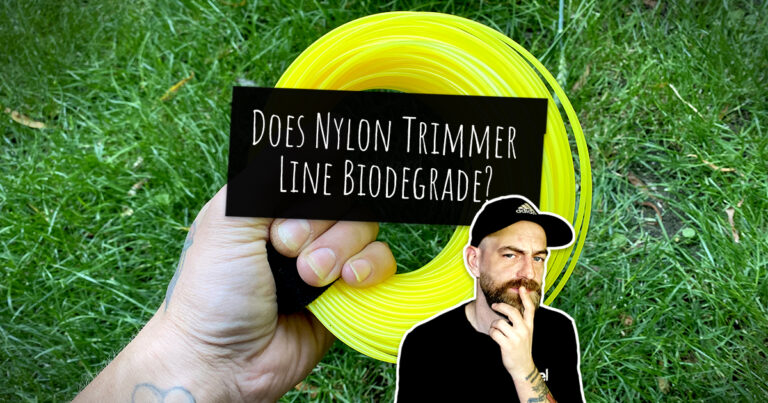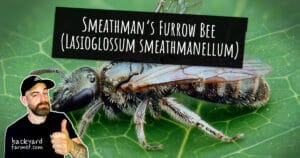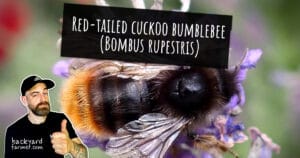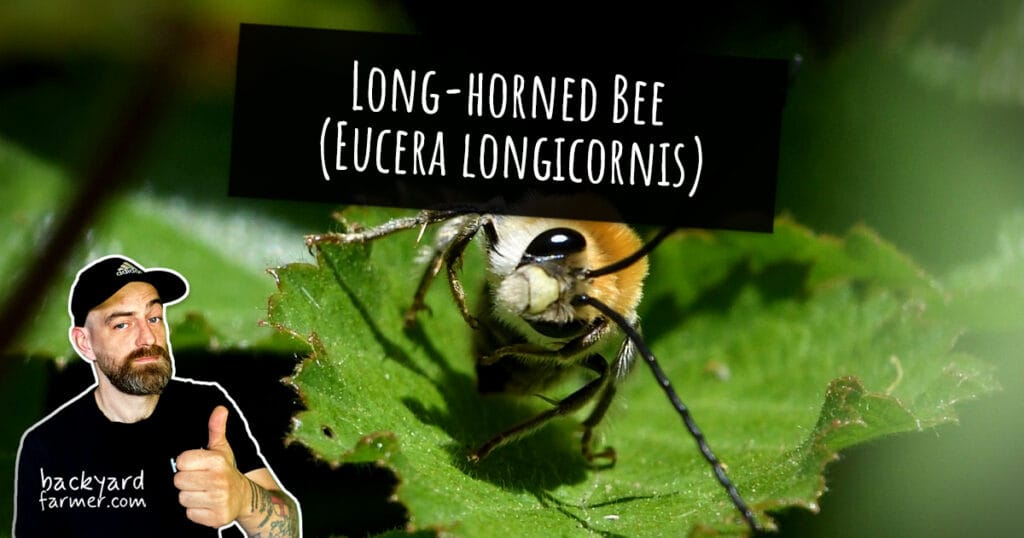Table of contents
- Introduction
- What Is Nylon Trimmer Line Made Of — and Why Doesn’t It Biodegrade?
- Does Nylon Biodegrade in Soil or Water?
- What Happens to Nylon Trimmer Line in the Garden?
- What About Oxo-Biodegradable Trimmer Line?
- The Environmental Cost of Convenience
- Sustainable Alternatives Worth Exploring
- Final Thoughts: Every Trim Leaves a Trace
Introduction
Does nylon trimmer line biodegrade? It’s a question more gardeners are starting to ask — and with good reason.
When you’re tidying up borders or knocking back weeds, you probably don’t think twice about what your trimmer line is made from. But as a working gardener, this stuff gets under your skin — quite literally when tiny bits of plastic end up in your compost heap or soil beds.
On the surface, nylon feels like a no-brainer — it’s strong, flexible, and readily available. But that strength comes at a cost. Once it snaps off, it doesn’t just vanish. Instead, it can linger in the soil and environment for decades, breaking down into microplastics that stick around far longer than they should.
In this post, we’ll get stuck into:
- What nylon trimmer line is actually made of
- Whether it breaks down or builds up
- Why this matters for your garden and the wider world
- And how switching to an eco-friendly alternative to nylon trimmer line is one of the easiest sustainable swaps you can make
If you care about your patch of land and want to avoid the hidden impact of plastic, understanding whether nylon trimmer line biodegrades is a great place to start.
What Is Nylon Trimmer Line Made Of — and Why Doesn’t It Biodegrade?
To understand why nylon trimmer line doesn’t biodegrade, we need to dig into what it’s actually made from. Most of the stuff you’ll find in garden centres is made using synthetic polymers — basically, a type of plastic called nylon.
🔬 What Is Nylon?
Nylon is a synthetic material that’s been around since the 1930s. It’s created from petrochemicals — the same fossil fuels used to make everything from packaging to polyester. When it comes to strimmer cord, the two most common types are:
- Nylon 6
- Nylon 66 (or Nylon 6,6)
These materials are popular because they’re:
- Tough and strong (great for heavy-duty work)
- Flexible enough to bend without snapping
- Resistant to water, wear, and heat
⚙️ Why Nylon Became the Norm
There’s a reason nylon took over as the go-to for trimmer line. It’s tough enough to tackle weeds and edges, cheap to produce, and easy to replace. For most people, it just works.
But here’s the catch — that durability comes with a cost. Nylon isn’t just strong; it’s also stubbornly resistant to breaking down. While natural materials return to the earth, nylon lingers, turning into tiny plastic fragments that hang around in your soil and compost for years.
In the next section, I’ll break down what happens to all those snapped-off bits after they leave your strimmer — and why it’s something we should be thinking more about.
👉 Want to switch to a greener option? Check out my full guide on biodegradable strimmer cord for the best eco-friendly picks.
Does Nylon Biodegrade in Soil or Water?
The short answer is no — nylon trimmer line doesn’t biodegrade in garden soil or water. Not even close.
❌ Nylon Is Not Biodegradable
Unlike natural fibres like wood or cotton, nylon is a synthetic plastic designed to resist the elements. It’s tough, yes — but that toughness means it can hang around for decades, even centuries.
Some sources reckon nylon might last 50 to 500 years depending on sun, air, and temperature. But even then, it doesn’t actually disappear — it just breaks down into smaller and smaller fragments, turning into microplastics that stick around in the soil.
🔍 Biodegradable vs Just Breaking Up
Here’s where things get a bit misleading:
- Biodegradable means soil microbes can break a material down into harmless stuff like water, carbon dioxide, and organic matter.
- Fragmentation, on the other hand, is just breaking into bits. Nylon might crumble, but it stays chemically plastic, no matter how small it gets.
So what you’re really left with is microplastic dust, not mulch.
🚫 Compost Can’t Fix It
Whether you toss it in your compost pile or leave it in a bed, nylon won’t budge. It’s invisible to microbes and fungi, and even industrial composting plants can’t process it. That means every snapped-off bit is still lurking somewhere, possibly making its way into waterways or blowing around in your topsoil.
In the next section, I’ll look at what all this leftover nylon means for your garden and the environment. Spoiler: it’s not just about what you can see — nylon trimmer line leaves more behind than you’d think.
🌍 To understand how plastic waste like trimmer line affects nature, visit Keep Britain Tidy’s Plastic Challenge and see its impact on wildlife.
What Happens to Nylon Trimmer Line in the Garden?
Once a bit of nylon trimmer line snaps off, that’s not the end of the story — it doesn’t just vanish. Instead, it becomes part of your garden’s soil, compost, and surroundings for the long haul.
Even though nylon trimmer line doesn’t biodegrade, it still breaks down into something far worse — microplastics that linger in the garden.
🧩 Breaks Into Microplastics
Instead of breaking down like natural materials, nylon slowly fragments into tiny plastic particles. These bits — known as microplastics — are often too small to see but still cause big problems. They:
- Stick in your soil
- Get washed down drains
- Blow across the garden with the wind
🌱 Lurking in Soil and Compost
If, like me, you mulch your beds or reuse soil and compost, these bits of line don’t just go away. They:
- Don’t rot
- Don’t feed your plants
- Mess with your soil’s texture
- Can be eaten by insects and worms
- Might leach unwanted chemicals as they age
Even if you send garden waste to the council, chances are some of those plastics sneak through and get mixed into commercial compost — meaning they come right back around.
🐦 Trouble for Wildlife and Water
Bits of nylon left in the soil can be picked up by birds or swallowed by small animals. Worms and beetles might mistake them for food. And once it rains? Those microplastics can wash into streams, rivers, or even end up in the sea.
So, a few bits of snapped line in your border might seem harmless — but over time, they add up to something much bigger. In the next section, we’ll dig into “oxo-biodegradable” strimmer line and whether it’s actually any better — or just clever marketing.
What About Oxo-Biodegradable Trimmer Line?
Some brands are now labelling their products as “oxo-biodegradable” trimmer line, hinting at a greener alternative to standard nylon. But what does that actually mean — and is it genuinely better?
⚠️ What Is Oxo-Biodegradable Plastic?
Oxo-biodegradable plastics are made from regular polymers like nylon or polyethylene, but with added chemical agents that activate when exposed to heat, oxygen, or sunlight. The goal? Speed up the breakdown.
At first glance, it sounds like a smart solution. But here’s the rub:
- These plastics don’t fully biodegrade. Instead, they just shatter into microplastics — faster than nylon, yes, but just as persistent.
- Those added chemicals often make the material brittle, not compostable.
- They still won’t break down in your soil, compost heap, or water butts like true biodegradable products.
🌱 Green Promise or Greenwash?
The term “oxo-biodegradable” has taken some serious flak — and for good reason. Environmental groups and scientists have raised alarms, and some countries have even moved to ban these plastics outright. Why?
- They worsen the microplastic problem
- They disrupt recycling systems
- They give consumers a false sense of doing the right thing
And worst of all, it keeps us from asking the right question: does nylon trimmer line biodegrade — and are we actually solving the problem?
✔️ Bottom Line
Despite the eco-sounding label, oxo-biodegradable trimmer line isn’t the answer. It still leaves behind plastic fragments and offers no meaningful improvement over the stuff we’re already trying to move away from.
Next up, we’ll step back and take a look at the bigger picture — the environmental impact of nylon trimmer line, and why convenience might be costing more than we think.
The Environmental Cost of Convenience
At first glance, using nylon trimmer line might seem like no big deal — and most folks don’t stop to ask, does nylon trimmer line biodegrade? But over time, it builds into a much bigger issue that’s hard to ignore.
🧹 Everyday Use, Lasting Damage
As a gardener, I know how often a bit of trimmer line snaps off mid-job. It happens all the time. But multiply that by millions of gardens across the UK, and you’ve got kilometres of plastic cord left behind — buried in soil, tangled in compost, or scattered along hedgerows.
Every time we strim, there’s a good chance we’re adding:
- Microplastic fragments to our growing spaces
- Non-degradable waste to compost heaps
- Plastic residue to the environment around us
🔄 Hidden Costs in the Garden
Sure, nylon is cheap and easy to grab off the shelf. But there’s a hidden price tag:
- It can disrupt soil structure and microbial life
- It adds plastic to compost that ends up back in your beds
- It quietly undermines the health of your garden — even if you’re doing everything else right
So while it might feel like a quick fix, nylon trimmer line leaves a long trail of damage behind. And most of the time, we don’t even see it happening.
Next, we’ll take a look at what we can do instead — from compostable cord to low-impact alternatives that still keep your borders neat without the plastic fallout.
Sustainable Alternatives Worth Exploring
If, like me, you’re tired of scattering plastic in the garden every time you strim, you’ll be glad to hear there are now some genuinely eco-friendly alternatives to nylon trimmer line worth looking into. If you’ve ever wondered “does nylon trimmer line biodegrade?”, these options are your answer.
🌾 Biodegradable Trimmer Line
Some brands now make strimmer cord from plant-based bioplastics, like PLA (polylactic acid). These lines are designed to break down naturally, either in industrial composting setups or — a bit slower — right in the garden.
A couple of options include:
- GreenLine trimmer cord – made using a patented biopolymer formula
- WeedRecede Sustainaline – features a clever paper-based spool and bio-cord combo
These products are still fairly new, but many perform just fine for general garden use. For anyone wanting to reduce plastic waste, they’re a solid step forward.
🧪 Are They Truly Compostable?
Here’s the thing — not all biodegradable cords are created equal. Some break down in your home compost, while others need higher temperatures to do the job.
Always check the packaging:
- Look for EN13432 or ASTM D6400 certifications
- Steer clear of anything labelled only as “oxo-biodegradable” — we covered why earlier
👍 Why Make the Switch?
Choosing a compostable line brings real benefits:
- It helps cut down microplastic pollution
- It supports healthier soil and compost
- It fits right in with an organic or low-impact garden setup
Sure, they might cost a little more up front. But for me, the peace of mind is worth it — especially if you’re already putting the effort into composting and growing sustainably.
In the final section, we’ll wrap up why these small changes matter — and how, together, we can start strimming without the plastic guilt.
Final Thoughts: Every Trim Leaves a Trace
It’s easy to overlook something as small as a snapped bit of trimmer line. But over time, those fragments build up — working their way into your soil, compost, and even the local wildlife habitat.
We know now that nylon strimmer line doesn’t break down, and even the so-called oxo-biodegradable versions are more marketing than meaningful. Thankfully, there are better, low-impact options out there. These days, biodegradable and plant-based alternatives are easier to get hold of and reliable enough for regular use.
As someone who spends most days in the garden, I’ve come to realise that being sustainable isn’t about being perfect. It’s about making better choices — step by step. Switching to compostable cord is a small shift, but it’s one that lines up with the kind of garden I want to grow.
So next time you’re replacing your line, take a moment to ask — does nylon trimmer line biodegrade, and what trace will it leave behind?
Every trim leaves a trace — so let’s make it one that’s easier on the planet.





